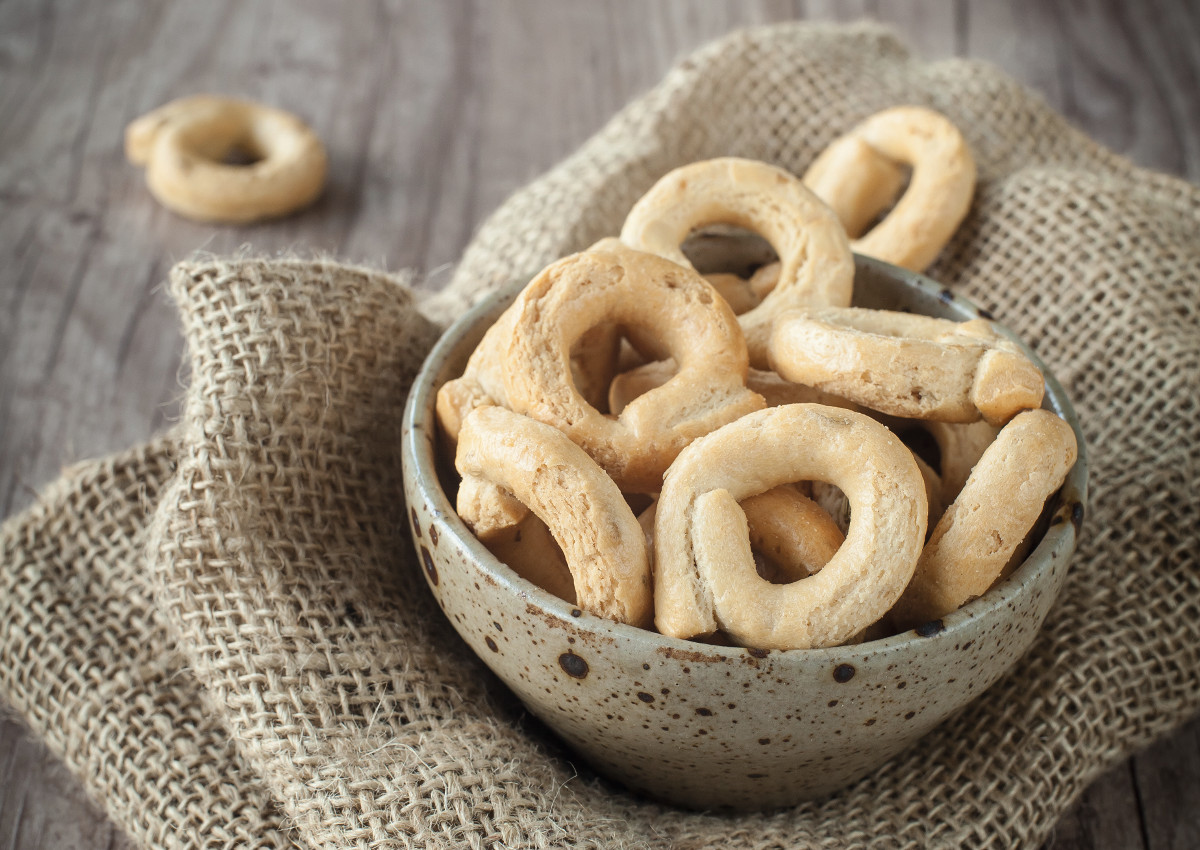
The exports of Italian sweets and baked goods (breadsticks, crackers and taralli) has reached a turnover of over 2,577 million euros, growing by 3.05% from January to August 2018, according to Elaboarazioni Federalimentare based on Istat data. As far as volume is concerned, this represents an increase of 5.80%, or rather 650.62 tonnes. Within this sector, baked goods total 485.63 million euros (+2.63%), equal to 156.96 tonnes (+4.42%). The savoury baked goods segment is significantly contributing to achieving these important results as it is responding well to latest, modern consumption trends. Taralli, a regional product from Apulia, hold a significant place within this sector, along with breadsticks and crackers. Taralli have increased in popularity over the last 10 years becoming available all over the national territory. They have also found their way onto international markets.
TARALLI, A RECIPE BASED ON TRADITION
Taralli is a traditional Apulian product that in recent years won a spot on the tables of all Italian people. This is thanks to a simple recipe. Moreover, taralli can be a substitute for bread, but also as a healthy snack during the day. The traditional recipe includes the use of all-purpose flour, extra virgin olive oil, salt and white wine. The cooking process includes two steps; first boiling, then baking. Because of the increase in demand for healthy and tasty snacks, the segment has expanded to include the use of different flours (for example, kamut [khorasan wheat], or ancient grains), new flavours, organic variations and lower salt quantities. Packaging as well has made some changes with the single portions becoming more and more popular as they are ideal for on-the-go consumption.
NEW EU CERTIFICATION PLAN
Interest is growing with regards to alternative bread options both in Italy and abroad. These options vary and include organic breads which contain ancient grains and those that are healthier and more nutritional such as ones made with longer leavening times, fat-free, that are whole-wheat, low-salt or use locally sourced ingredients. At the same time, some traditional Italian breads have been recognized by the EU. The Coppia ferrarese (a type of sourdough bread from Ferrara), Pagnotta of Dittaino (common in Sicily, loaf of bread made with durum wheat), Pane casereccio di Genzano (a long loaf local to the area around Rome), Pane di Altamura (round loaf made from durum wheat and found in the Apulia region), and Pane Toscano (bread without salt, most common in Tuscany) are the five varieties that have been registered at the European level in order to protect and safeguard their authenticity.
Go to the italianfood.net platform to discover the authentic Italian bakery & snacks suppliers
